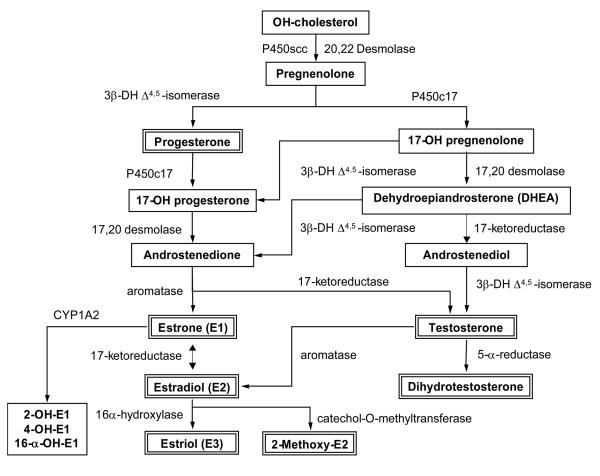Fig.1.
Sex Steroid Biosynthesis. Biosynthesis of steroid hormones starts with conversion of cholesterol to pregnenolone through the cleavage of the cholesterol side chain by P450scc (Cytochrome P450, family 11, subfamily A, polypeptide 1). Pregnenolone is converted to progesterone though the 3β-DH delta4,5 isomerase pathway, or testosterone through the P450c17 pathway. Progesterone is converted to androstenedione through the 17,20 desmolase (P450c17) pathway. Androstenedione is then converted to E1 by aromatase in the extragonadal tissue, a pathway that increases with aging. Primary synthesis of E2 comes from a reversible reaction through the 17-ketoreductase pathway from E1. A secondary source of E2 comes from aromatization of testosterone in peripheral adipose tissue. E2 can be converted to E3 through hydroxylation by 16-α hydroxylase or to the highly active 2-methoxy-E2 through catechol-O-methlytransferase. Testosterone can also be converted to the more active dihydrotestosterone through the 5-α-reductase pathway.

